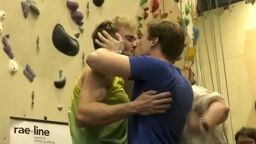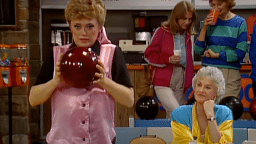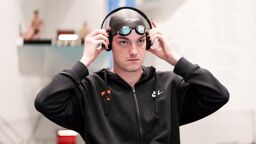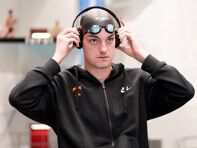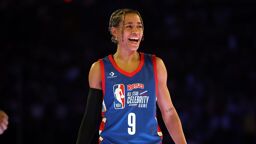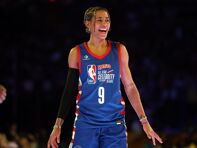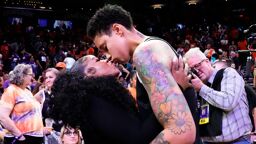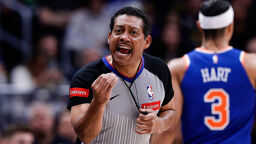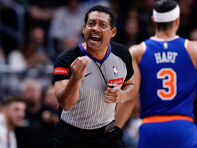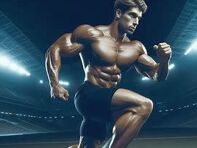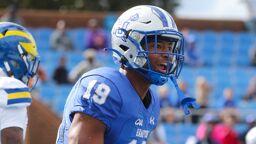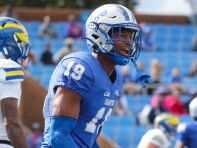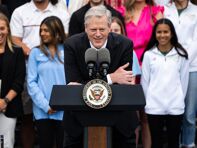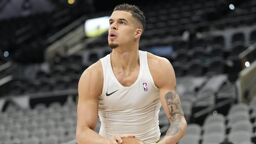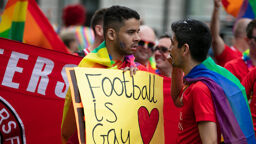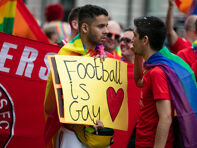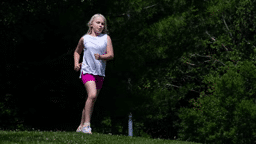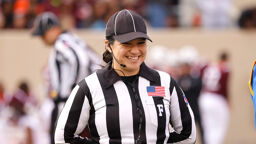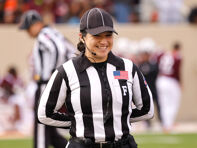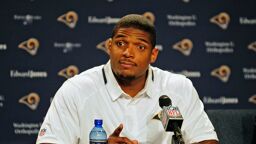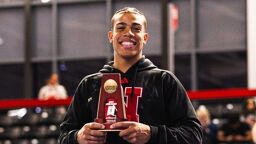(This story was published in 2006).
By: Lorrie Kim
It’s been 10 years since 1996 U.S. champion Rudy Galindo became the first big-name skater to be out while still competing at the Olympic-eligible level. But when you tune in to the Winter Olympics, not one of the figure skating contenders in any discipline (singles, pairs, dance) will be an out gay man.
There will be gay men competing in Turin, to be sure — including some who consider themselves to be out in their personal lives — but not one who will say so on the public record. What percentage of male figure skaters is gay? Unofficial insider estimates range from 25% to nearly 50%. But unbelievably, in 2006, Galindo remains the only top-level skater to have come out while Olympic-eligible. Why? And does that mean nothing has changed in what Jon Jackson, an openly gay skating judge, calls “the gayest sport in America”?
Well, yes and no. What hasn’t changed is that many of the officials, judges, and skating federations, especially in the U.S., make it clear that they prefer male skaters to look “masculine” and will be harsher on effeminate-looking skaters when it comes to giving marks or desirable competitive assignments.
“One thing that sticks in my mind from back then was the way the ‘out’ ones got treated,” says Vancouver resident Chad Conley, (left) 27, who was a Canadian national medalist in the early 1990s, and is now out. “I never skated to anything like ‘Swan Lake.’ I was a bit of a truck driver on the ice, I was a jumper. But I remember when Rudy Galindo started saying that the judges treated him differently because he was gay … so I kinda made sure that I stuck to my usual and tried not to do anything that would’ve been deemed ‘gay.'”
Trying not to be deemed gay in skating requires behavior ranging from the overt, such as dating women, to details so subtle that they affect the very way the skater moves his limbs while putting himself out there to be judged.
Jackson, author of the just-released “On Edge: Backroom Dealing, Cocktail Scheming, Triple Axels, and How Top Skaters Get Screwed,” said that judges might say of a male skater, “Does he have to do a layback spin? Can’t he do something else?”
There are some moves, such as laybacks and spirals, that are more frequently done by women and considered effeminate on men. Obviously, skaters like to include their strongest moves in their programs, but a male skater who is strong in these moves knows that to perform them is to risk prejudice.
“I think it prevents them from fully developing as individuals,” said Jackson of this anti-femme prejudice. “Figure skating is such an individual, expressive sport. Until you’re fully comfortable with who you are and have complete confidence in yourself, you can’t express yourself on the ice. This holds them back.”
And skating is such a mental game that when a skater’s mind holds back in one area, like choreography, this tends to cause problems in other areas as well, such as jumps.
Jackson confirmed that the homophobia of judges and federations affects the athletes. Unfortunately, he said he does not believe homophobic officials are in the minority.
“The skaters absolutely feel that pressure. This comes across in every discussion I’ve had with a gay skater, that they really feel that they have to present themselves as a ‘passable’ masculine skater,” said Jackson. “They don’t want to be the skater that hurts figure skating’s image and TV contracts.”
So gay skaters either come out long after their competitive careers are over, as 1979 world champion Randy Gardner (with pair partner Tai Babilonia) just did in January, or when they’re so far off the radar screen that their federations aren’t monitoring them, as happened withRudy Galindo in 1995 when he was considered a has-been.
What’s changed since 1996, though, is that many of the Olympic-eligible gay skaters consider themselves to be fully out in their personal lives.
More Acceptance Seen
“Within the rink environment, for the most part, I’m noticing more and more that the coaches, the fellow skaters are all very accepting and comfortable and not the least bit bothered by gay men. Hopefully it will slowly creep up to the level of the officials and judges, and I do see that happening,” said Jackson. He sees changes even among closeted gay coaches of older generations, who can be some of the most vocal critics of any skating that appears the least bit femme.
“Those coaches, who were accustomed to having to pass [as straight], were uncomfortable maybe 20 years ago with too much of the coming out of gay skaters, because it threatened what they created to make a safe environment for themselves,” said Jackson. “But I’ve seen more and more coaches come around to the acceptance that this is part of our sport and these young gay men are valuable to the sport.”
The gay skaters Jackson knows, he says, “know where their support is and they’re getting it already. If they thought the organizational side of the sport would be there for them, I think a number of them would already have come out. I think it’s U.S. Figure Skating’s responsibility to step up and say that this is not harmful to our image, acknowledge the fact that everybody else knows that there are gay men in figure skating, and they love it.”
And if that happened, the air would be cleared enough for straight male skaters to feel more welcomed and acknowledged as well, something that would surely please the federation. Chad Conley sees that beginning to happen already.
“Over the last five years, I have noticed more straight guys in that sport, particularly in pairs and dance,” said Conley. “Some people may think that is a shock, but being a figure skater doesn’t hold the stigma that myself and others felt 10 or 12 years ago.”
Nor is it all about being gay, of course; it’s first and foremost a sport. “I wasn’t even old enough to know what gay was when I started skating,” said Conley. “I was in kindergarten.”
But as skaters grow older and more aware, they can find that figure skating is a wonderful sport for the male athlete who may not fit traditional masculine roles, but is strong, competitive, and determined. Every year the sport’s network of coaches and judges who mentor young gay athletes becomes stronger and better informed. Conley says he still keeps in touch with gay judges who advised him in his competitive days. Jackson, who competed in the 1980s, said, “When a young man is involved in the sport, 99% of his time is spent in that environment. I did see this as a safe haven.”
So, what might happen, hypothetically, if this “safe haven” were blown open and an Olympic-level skater were to come out publicly today?
“Maybe the sport is ready and the floodgates might open, and that might be a good thing,” said Jackson. “I think that when Rudy came out, it wasn’t ready. And so you didn’t have 20 or 30 or 50 — or any — skaters follow his lead in the eligible ranks. I think if it happened at a very high level now, given the environment that has been created in many of our rinks, others would follow suit.”
Lorrie Kim has maintained Rainbow Ice, a site about gay issues in figure skating, since 1998, and has talked to dozens of gay figure skaters in her work as a skating journalist. In 2003 she worked for the short-lived World Skating Federation, co-founded by Jon Jackson in response to figure skating’s corruption after he blew the whistle on cheating French judge Marie Reine le Gougne at the 2002 Salt Lake City Olympics.



